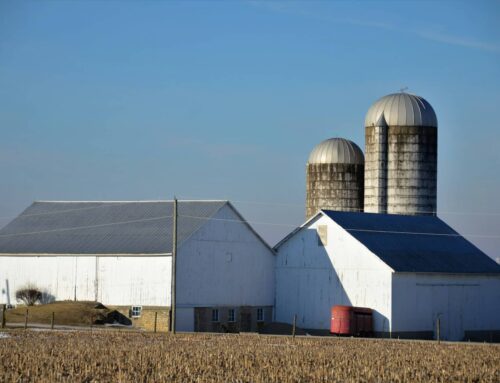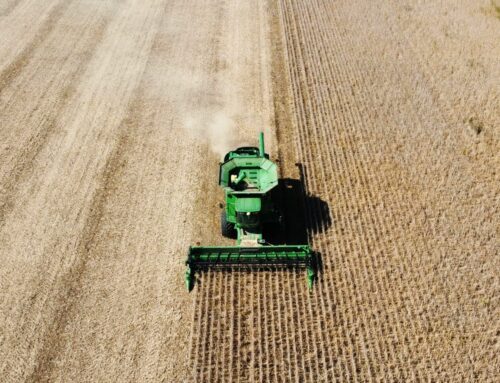It's late April and while you might still find Snow on the Beach, in much of the country it's planting season. Enchanted by federal farm subsidies, some lawmakers on the House and Senate Agriculture Committees are busy sowing the seeds for a costly new Farm Bill. But with $34.5 trillion in debt and deficits crescendoing, the farm bill can no longer be a Gold Rush for special interests. It's time for lawmakers to (Taylor) Swiftly sing a new tune and write Our Song of common sense and fiscal responsibility into the farm bill.
The farm bill is Washington's primary tool for composing federal farm policy. Adopted every five or six years, it covers everything from farm income subsidies and rural broadband to soil conservation and trade promotion. It also governs numerous federal nutrition programs, including the largest one, SNAP—the Supplemental Nutrition Assistance Program—utilized by more than 40 million individuals monthly.
The farm bill also tops the charts as an example of Washington's worst impulses. The legislative union of farm subsidies with SNAP (formerly the "food stamps" program) is both intentional and cynical. By tying nutrition assistance, crucial to many urban lawmakers (mostly Democrats), to the farm bill's fate, rural lawmakers (mostly Republicans) have historically formed a united front to block reforms. We know this story All Too Well, as it has been on repeat in farm bill after farm bill.
Consequently, farm bills have grown massively in scope and cost. The 2008 farm bill had a price tag of $641 billion ($936 billion today). The current mix of farm bill programs is projected to cost $1.51 trillion moving forward; even without any additions. But Congress's internal Tortured Poets Department (Congressional Budget Office) has a poor track record of predicting how farm bill programs will perform when they leave the studio and go live. That 2008 bill ended up costing $887 billion (138 percent of face value) when the receipts were tallied. The last bill adopted in 2018? It's running $418 billion more than initially projected.
But when it comes to the benefits, for most farmers the farm bill actually says I Forgot That You Existed. According to the 2022 Census of U.S. Agriculture, the U.S. has 1.9 million farms, but the largest farm subsidy program, federal crop insurance, had only 460,000 policy holders that year. Of these, just 10 percent received 56 percent of the subsidies. The "Commodities" title of the bill is even narrower, restricted to a handful of "program crops" listed in the legislation, such as widely grown crops like corn, cotton, and soybeans as well as low acreage ones like peanuts and rice, but excludes nearly every crop you'd recognize as food.
Despite this increase in spending, the biggest obstacle to adopting a new farm bill is the Agriculture Committees' desire to spend even more. The proposals making up this farm subsidy Love Story range from increasing already generous crop insurance subsidies, to doubling trade promotion programs, and raising government-enforced minimum prices for specified crops (namely peanuts, cotton, and rice). Funding these increases requires cutting existing programs or generating new revenue, creating stark partisan divides. While Republicans have proposed cutting SNAP or Conservation dollars to defray some of the costs, Democrats have told them They Need to Calm Down. Cutting nutrition or climate-focused conservation programs to pay for an increase in subsidies for greenhouse gas intensive crops like rice is a nonstarter. And Republicans view any provision that may generate new revenue as The Albatross around their electoral neck. The impasse, which has already resulted in a one-year extension for the 2018 farm bill, is creating some Bad Blood on the committee and making prospects of a 2024 farm bill dim.
Both the 2014 and the 2018 farm bills initially failed on the House Floor due to cuts to nutrition programs, and inadequate farm subsidy reforms, leading a majority of House members to tell the Agriculture Committee You're Losing Me. The way things are moving now, a business-as-usual farm bill could face a similar fate.
Rather than resorting to The Alchemy of budgetary gimmicks or funding farm bill increases in non-farm bill accounts, the Agriculture Committees should seek to build a new farm bill coalition because It's Nice to Have a Friend. The old farm bill coalition is never ever getting back together in a way that will produce a farm bill that works for taxpayers, consumers, or even most farmers. An unwillingness to acknowledge that Everything Has Changed, well, This is Why We Can't Have Nice Things.
We are not Out of the Woods yet. It's time for a farm bill to be built on a better foundation. Are you …Ready for It? We are and we even have a demo tape, if you'd give it a listen (or read).










